The Old Master
Born on this day in Baltimore back in 1874, the great Joe Gans got his start in boxing the way many black fighters of his time did, in absurd, exploitative spectacles called “battle royals.” For these brutal, winner-take-all brawls, several young black men would be blindfolded and pushed into the ring at the same time. There were no rules; it was just sheer mayhem as the desperate combatants flailed away until finally one man was left standing. More often than not, that man was Gans, who went on to have his first legitimate boxing match in 1893. It didn’t take long for him to establish a reputation as a fighter to be feared.
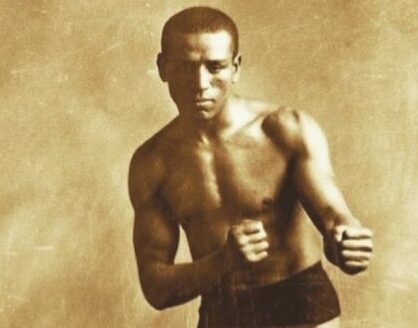
From the beginning, what set Gans apart was his intelligence and the sophistication of his ring technique. While many, if not most, pugilists of the time looked to swarm or brawl, Gans developed a style which capitalized on his exceptional athleticism and quickness. He delivered blows in a precise and studied manner, with grace and economy of movement. Historians credit him with building upon the shrewd ring craft of his predecessor, all-time great bantamweight champion George Dixon, aka “Little Chocolate,” and popularizing the basic techniques in terms of stance, footwork, blocking and counter-punching, as well as the central importance of the jab. After Gans, all boxers learned these techniques. While he also possessed terrific punching power, Joe’s ring smarts and general canniness were so much a part of his success that he earned the moniker “The Old Master,” long before he could ever be considered “old.” In fact, he would not live long enough to ever fulfill his famous nickname.
Newspaper stories from the time attest to Gans’ masterful technique and high reputation. In 1906, The Boston Globe described him as “one of the most wonderful fighters from a scientific view that the world has ever known. There is not a trick or point that he does not know.” The San Francisco Chronicle stated that “[t]here never was a fighter who could block with such skill and precision as Gans.” His contemporaries also recognized his brilliance. Pound-for-pound great Sam Langford (who defeated Gans under rather exceptional circumstances) declared him the finest boxer who had ever lived. Three-time champion Bob Fitzsimmons regarded him as “the cleverest fighter, big or little, that ever put on the gloves.” Benny Leonard, who learned to box while Gans was still champion, idolized “The Old Master,” his own highly cerebral ring craft strongly influenced by his predecessor’s.
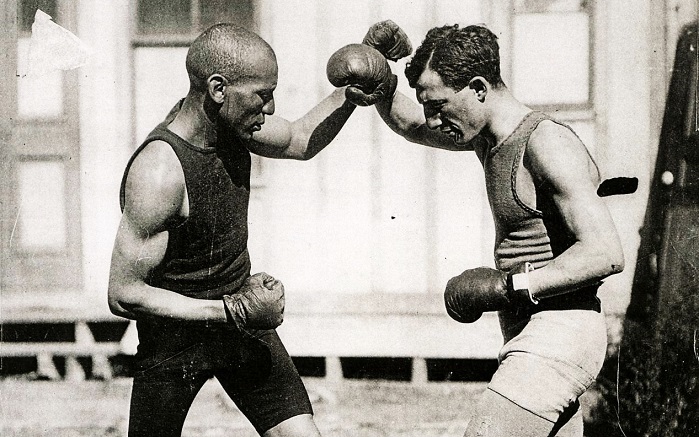
But despite being highly regarded, Gans did not receive a title shot until 1900, when he fought Frank Erne for the championship and abruptly quit in the twelfth round due to an eye injury. The circumstances of the loss were exploited by some to bolster the repugnant belief of the time that Black men lacked the same grit and courage as whites, but in fact Joe asked for the bout to be halted only after his eye had actually been dislodged from its socket. As reported by several newspapers, a clash of heads caused the severe injury, which made continuing impossible.
Later that same year, Gans met brawler Terry McGovern in Chicago and was knocked down eight times in less than two rounds before the match was stopped. The result was greeted with widespread disgust; no one believed it legitimate. The resulting uproar prompted the city of Chicago to ban boxing, a ban that held for over two decades, and Joe later admitted to taking a dive on orders from his manager.

While this constituted one of two certified instances where Gans participated in a “fix,” few doubt that there were numerous occasions on which Joe had no choice but to “box to orders.” The ugly truth was that the great champion often entered the ring “handcuffed,” mandated by gamblers or his manager to carry an opponent a certain number of rounds, or even to lose. Lightweight champion Willie Ritchie, who knew Joe, states in an interview that, “Gans had to do as he was told by the white managers. They were crooks. They framed fights, and being a Negro, the poor guy had to follow orders, otherwise he’d have starved to death.” Meanwhile, in contests that were on the level, Gans had to endure all kinds of unfair treatment, such as making weight just minutes before the bout, or while wearing his boxing gear, not to mention being flagrantly fouled. And when the fighting was done, even when he was the victor, he often watched his white opponents walk away with the lion’s share of the cash.
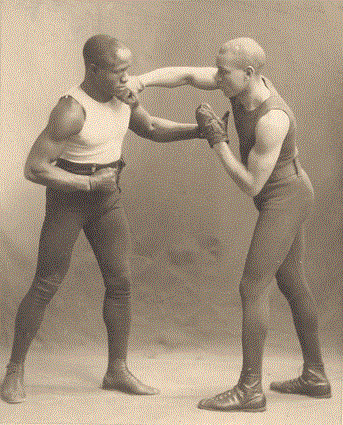
A year after the defeat to Erne, Gans secured a rematch and this time flattened the champion in a single round to finally win the title; the victory made Gans the first American-born Negro to hold a world title belt in any sport. This did not sit well with many, and racism would in fact define both the rest of Gans’ career and his life. He defended his championship regularly and in 1904 defeated James Edward Britt by disqualification after being punched while he was down. Britt, a white man, then claimed to be the rightful champion, despite the disqualification, and had the backing of many, for no reason other than bigotry. When Britt then lost to Battling Nelson, it set up a showdown that the sporting public clamoured for: Nelson vs Gans for the undisputed championship. The resulting duel, held in Nevada in September of 1906, proved historic for boxing, while tragic for Gans.
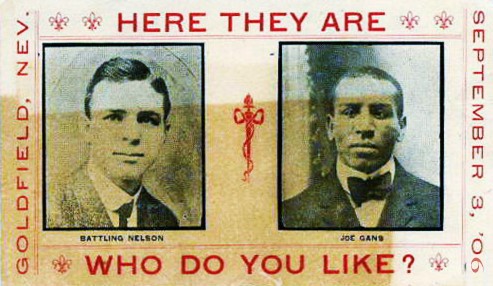
The terms of the bout were horribly unfair to Joe, especially when one considers that he, not Nelson, was the rightful title holder. Not only did he have to cede most of the purse money to his white opponent, but Nelson insisted Gans make weight three separate times prior to the match, each time while wearing his boxing gear, the last just hours before the fight. This was to be one of the last “fight to the finish” bouts in boxing history and it was a grueling war, though largely one-sided. Nelson was outclassed for the most part and Gans scored several knockdowns. Finally, in round forty-two, Nelson reached his limit and intentionally struck Gans below the belt to foul out.
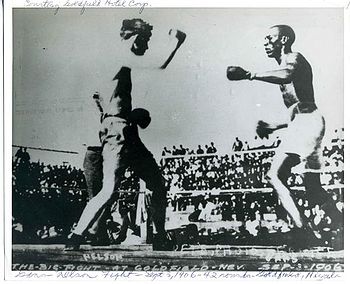
Following this victory, Gans was never the same. The strain of the constant dehydration to make weight, plus the epic battle in the Nevada heat, took their toll and soon after he contracted tuberculosis. Amazingly, he would continue boxing for another two years, even meeting Battling Nelson twice more, however losing both times. But it was obvious to all this was not the same Gans, with reporters remarking on his “dull eyes” and “grey skin.” The San Francisco Chronicle even noted him shivering from fever in the third match with Nelson. By the summer of 1910, more than a year after his last fight, it was obvious he was dying and he embarked on the long train ride back east to see his mother before it was too late. Word spread and soon hundreds of people were gathering at the train stops along the way to pay their respects. He died in his mother’s arms at the age of only thirty-five in his home city of Baltimore, where thousands attended the funeral for “The Old Master.”
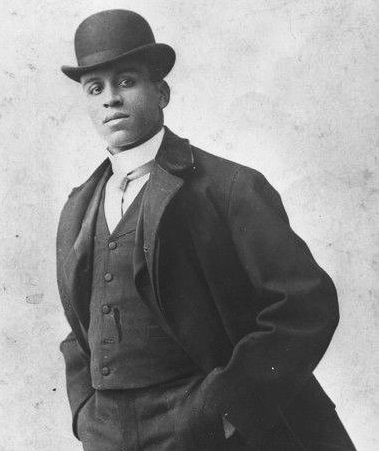
Joe Gans final record, including newspaper decisions, stands at an astonishing 159-12-20, with many, if not most, of the draws and losses being bouts he actually won or intentionally forfeited. He deserves to be remembered as one of the finest boxers of all time, regardless of weight, and, arguably, the best lightweight ever. More than one boxing reporter from Gans’ era pegged him as the greatest fighter who had ever lived, at any weight. Nat Fleischer rated him the all-time best lightweight, while historian Charley Rose ranked him second only to Benny Leonard. Eminent boxing historian Monte D. Cox regards Gans as the greatest lightweight ever, and, in terms of the best boxers of all-time, pound-for-pound, second only to the great Sugar Ray Robinson. — Michael Carbert

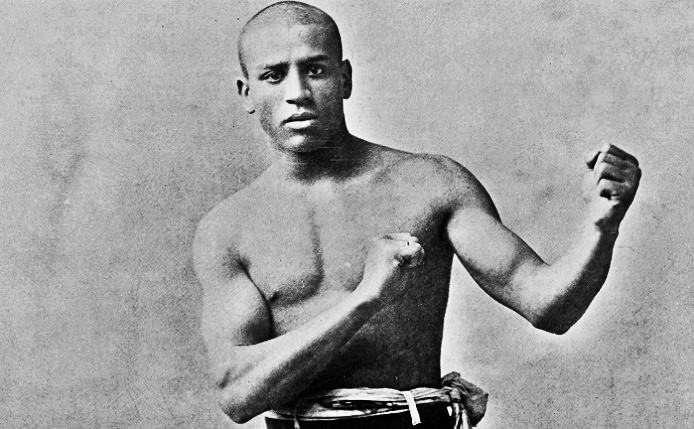


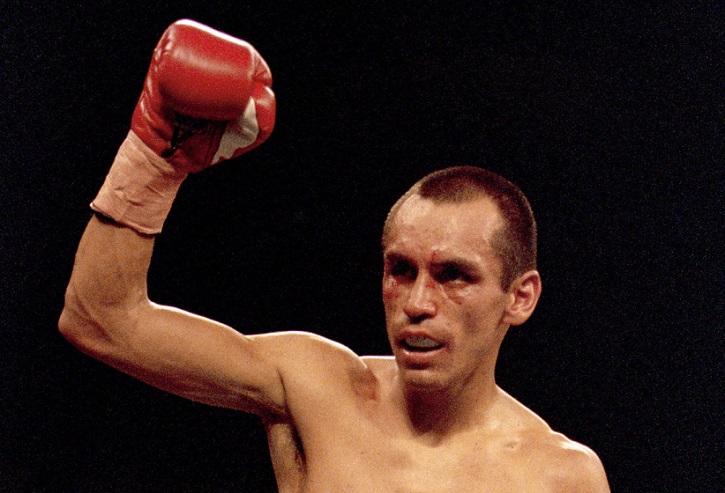
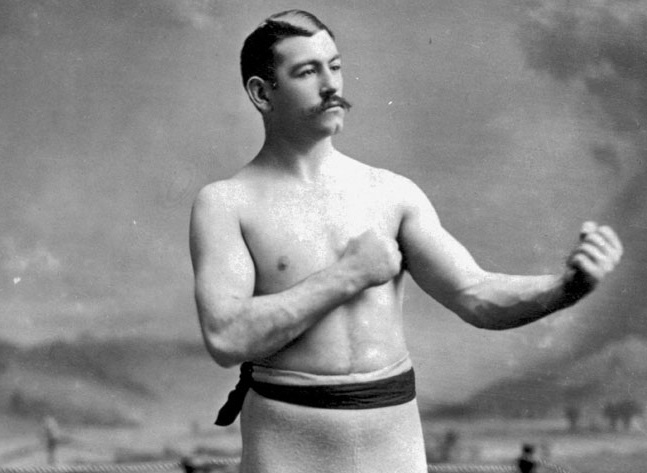
He did a lot for boxing.
Gans was the greatest boxer ever and his defense was vastly superior to Ray Robinson’s
What did you like the most about him? After all, i’m sure that you saw him box many times.. Better defense than Ray Robinson and the greatest boxer ever..? How in the world can you pump out hyperbole like that?!
There are films of Joe Gans on Youtube. My opinion of Gans’ fistic ability is shared by Abe Attell and Sam Langford. Additionally, Bob Fitzsimmons said that he was the most clever box ever. Jack Johnson said that Gans’ movement was such that he appeared to be on wheels. You are a grossly ignorant would-be boxing critic! I doubt that you ever heard of Gans.